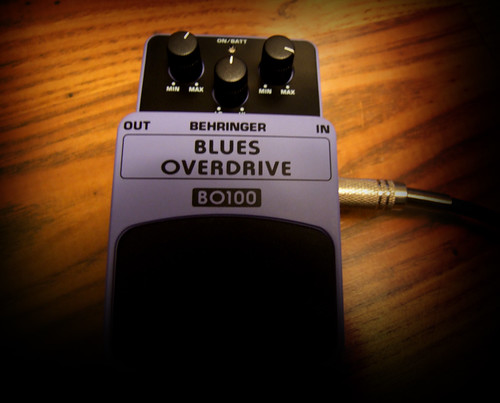In pointing out Behringer’s clone of Apple’s homepage, I may have left some things unclear. I was honestly surprised to find a number of people rushing to Behringer’s defense. I wasn’t trying to score cheap and easy points against the brand, but while venting frustration, I may have underestimated the response of people who own Behringer gear. If you do, and it’s working for you, as always – that’s a good thing.
The conversation got me excited, and I stepped into the comment fray. I shouldn’t have in this case, and unless asked to, I’ll stay out of this conversation. I enjoy being involved in those threads, but there are times when I should keep my writing to this space and let you have at it in the space below – the one labeled “comments.”
I think the reason Behringer inflames some people boils down to two things. Those people may have been burned by gear that proved not to be a bargain, or offended by a history of gear designs copied from recognizable models, or both. The former, of course, can happen with any vendor, but it does illustrate that saving money doesn’t always save time or money. Caveat Emptor is therefore true with any vendor. The latter is really the sticking point. Here’s a loose timeline of the cases in question:
Behringer and Mackie: In 1997, Mackie sued not only Behringer but distributor Samson and retailer Sam Ash. Mackie claimed that Behringer mixers were intended as exact copies of Mackie mixers – not only of external look and feel, but circuit design and individual components. In 1999, Behringer and Samson claimed a decision by the US Copyright Office “vindicated” the company. That supposed vindication is fairly empty, however. The US Copyright Office didn’t say that Behringer’s circuit designs were original. Instead, they said that the circuit board designs weren’t covered by the US Copyright Office. That has more to do with peculiarities of US intellectual property law than it does a vindication of Behringer.

Behringer and Roland/BOSS: In 2005, Roland sued Behringer for duplicating the look and feel of its guitar pedals. The blog Music Thing had a nice visual of just what this looked like. In this case, there was no claim about underlying circuit design, but the look and feel or “trade dress” is covered legally. Again, Behringer was not exactly vindicated. The two companies reached a settlement. The terms remained confidential, but Behringer did modify the look of its pedals.
Behringer and Line 6: What’s more disturbing to me is that, after reaching a legal settlement with Roland, Behringer simply moved on to a different vendor. In 2007, Behringer introduced a new line of pedals copying Line 6 instead of BOSS. Again, Music Thing’s Tom Whitwell did a visual comparison. Less extreme, but demonstrating Behringer continues to try to steal Line 6 market share by looking like Line 6, even the prize for the web design competition (the V-AMP) is intended to clone Line 6’s POD.
These are not the only cases of Behringer products that are designed to look like someone else’s products. As noted in comments, even the screenshot of the Behringer website is of monitors intended to look like those from KRK. Part of why I’m taking up the Behringer stories is that Music Thing isn’t around to do it any more, but here are some of Tom’s best hits:
In 2006, Behringer again copied Mackie, answering Mackie’s ONYX with mixers-plus-digital-I/O called the XENYX. (They copied the look and feel of older Mackie mixers rather than newer ones, but this was also clearly intended to look like Mackie’s product.)
Some amount of cloning, of course, should be forgiven – it’s expected practice for software emulations to mimic the look and feel of classic analog gear, so I can’t really fault Behringer for that. (That said, of course, I still think there’s far too much of that, and far too little original thinking about how to lay out controls and design interfaces.) The difference between cloning a classic product and a currently-shipping product is that making something look like something else that you can buy new suggests you want to create confusion. There are laws around that – “trade dress” – but more importantly to me is the question of whether it’s ethical.
Please, if, in comments, you want to fill out this timeline or offer more details of each case, on either side, I’m happy to hear it.
Apple and Behringer: In the case of the Apple site, while I wish websites in general would stop cloning Apple’s design – good as it may be – Behringer crossed a line by copying product pages, the color weight, gradient values, pixel weights, and radius of the Apple site. My small images in the story didn’t do that justice. This is not about the “cult of Apple.” Let me make myself plain: please, stop making sites look like the Apple site. Behringer’s case I think was worse than most, but I’d be happy if other sites flirted less with some of the particulars of Apple’s designs. Apple’s solution is not always the “best” design solution. There are others.
(Side note: the basics of Apple’s current website design really have been tremendously influential – so much so that it’s easy to overlook how much of this is derived from Apple. The earliest version of the current look dates from around 1997. But you can be influenced by a design and make it your own, rather than copying every detail or copying every detail poorly. To pretend otherwise would be to say design doesn’t matter, and I can’t do that.)
Let’s consider the larger issues:
Cheap can be great. One thing I won’t do is discriminate against musicians because what they’re using is cheap. “Ghetto fabulous” I believe is the proper term. Far from that, I hope on CDM we can find every opportunity to champion finding ways of doing cool stuff with cheap things. However…
Cheaper doesn’t always save you money. Because value is important, because you’re on a budget, you don’t want to throw your money away. Assume for a moment the allegations that Behringer cloned Mackie’s mixers down to individual circuits and components were true. That still doesn’t cover issues like manufacturing quality assurance or support. Larger than any one vendor – Behringer or otherwise – we urgently need to consider value. We can’t afford disposable gear. Our musical electronics are made out of toxic materials, and they impact the environment as they’re made, shipped, and disposed. And we need them to last for our music, too. I’m certainly guilty of having made this mistake, but it’s something that – as a community – we can all do better. Again, perhaps you have a good relationship with Behringer gear, which is great.
Copying is good; plagiarism, not so much. There’s a huge benefit to making copies and improving on them. A certain amount of copying is part of design. There is a difference, however, if the copy is intended to create confusion, to substitute for something else dishonestly. It’s the difference between Kia competing with the Honda Accord, as mentioned in comments, and someone making a car that looks exactly like an Accord called the Monda Schmaccord, and steals the design of its drivetrain. Likewise, in music, sampling can be a beautiful thing. Taking someone else’s work and trying to pass it off as your own is something different.
I believe it’s essential to draw these lines. It’s only going to get tougher from here. If you think these isolated Behringer cases were bad, brace yourselves: an army of music technology cloning companies is waiting in the wings.
My plea to Behringer: kick your copying habit, if you can. I could forgive you if you didn’t keep doing it over and over again. That suggests to me, and many others, that it’s malicious, that you hope consumers won’t notice and will buy your cheaper version because, cosmetically, it looks the same as something else. If it really is different, and if it really is better, then that only makes this more of a tragedy.
I’m going to leave the Behringer discussion at this point, having provided some of the historical background. But I certainly won’t let go of these other issues. And the uprising of Behringer support says to me that CDM and I do need to spend more time talking about affordable gear, affordable software, and — not necessarily because it’s “cheap” or “free” — free and open source hardware and software. I welcome your suggestions.
